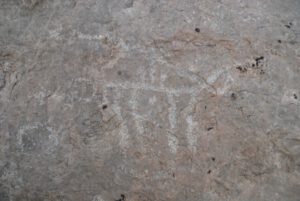Images of a society: Rock art in the northern Oman Peninsula from the Neolithic to the present
Rock art is an indispensable source for archaeological work, especially in regions where people lived a mobile lifestyle and thus produced fewer material legacies than sedentary societies. One of these areas is the Oman Peninsula, whose (pre)history is in large part still a blank area for research.

The aim of the project funded by the Thyssen Foundation is to examine the role of rock art in the north of the Oman Peninsula from the Neolithic to the modern age, in order to draw conclusions about socio-cultural, political and economic developments in the societies there from a diachronic perspective. For this purpose, a systematic documentation of the rock art in the northern portion of the Oman peninsula is to be carried out. The recording of images on-site in Oman relies on documentation by Dr Stephanie Döpper and her team, as well as by the local population, using an app specially designed for this purpose as a component of a citizen science project. Selected rock art is scientifically dated on-site in Oman, which is a novelty in the archeology of this particular region. Methods used include optically stimulated luminescence (OSL), radiocarbon dating and X-ray fluorescence (XRF) analysis. All of the data obtained is examined to determine whether there are patterns in the distribution of certain motifs and production techniques in the rock art, and whether these are related to natural conditions, topographic features or anthropogenic structures, which chronological distributions of the rock art can be worked out, and how the diachronic changes in the rock art can be connected and aligned with cultural-historical changes between the different epochs.